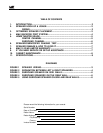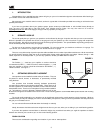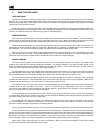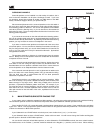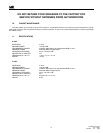
SURROUND CHANNELS
Surround speakers can be installed in a wide variety of locations, but in
some rooms their installation can be quite a challenge to install. If you have
any questions, please don't hesitate to contact your M&K dealer or the M&K
factory. We will be happy to discuss your system with you.
We recommend placement of the surround speakers on the side walls of
the room, two to three feet above the listeners' heads, either directly adjacent
to the listening position or behind it. You can aim the speakers to fire towards
each other (across the listening area), or you can aim them to fire towards the
back wall at an angle. The surround speakers should not be in front of the main
listening position if possible.
If you mount the surrounds on the side wall behind the listening position,
they can be aimed towards each other or angled towards the back wall or the
side wall surface directly behind them. By reflecting sound behind the listening
position, you may increase the sense of envelopment in the sound.
If you want or need to mount speakers on the back wall of the room, there
are several options. You can aim them so that they fire towards each other (so
they fire along the back wall); you can aim them towards the front wall of the
room; or you can angle them so they fire toward the side walls. Symmetrical
arrangements work best.
The speakers should be a minimum of a few feet away from the nearest
listener. Ideally, the surround speakers should not call attention to themselves
as separate sources of sound.
If the surrounds must be located close to the listeners, aiming them at the
room walls or even the ceiling can help to reduce any directional effect. As
described above, this can produce a desirable result even in rooms where the
surround speakers are an adequate distance from the listeners' heads.
If the surrounds cannot be placed on a wall, try placement on tables or the
floor to the sides of the main listening position, firing up towards the ceiling.
This can work very well in environments that do not allow permanent
attachment of speakers to the walls.
Some listeners prefer to use multiple pairs of surround speakers. While
this is not necessary, it can provide a broader and deeper surround effect, with
better coverage in very large rooms. When using multiple pairs of surround
speakers, a symmetrical installation pattern works best. For example, if you
are using two pairs of surround speakers, one pair could be mounted on the
back wall of the room, mounted equidistant from the back corners, with the
other pair mounted on the side walls of the room, equidistant from the same
back corners.
6. MAIN SPEAKER/SUBWOOFER PHASING TEST
In any system using a subwoofer separate from Main speakers, a phasing test must be performed to insure good bass blending.
This test insures optimum sound in the critical bass frequencies where your Subwoofer and Main speakers overlap.
Play a familiar CD, DVD, LP, or tape with steady, consistent bass content through your system. Listen carefully to the "mid-bass"
region of 75 - 125 Hz. This is the part of the spectrum where electric or string basses and drums predominate. Then reverse the phase
of either the subwoofer or BOTH Main speakers.
If your Subwoofer has a PHASE switch on its back panel, move it either from (+) to (—) or vice versa.
If your Subwoofer does not have a PHASE switch, it takes a bit more work. You will have to change the Positive and Negative
speaker inputs on the back of BOTH Main speakers.
You can do this at the back of both Main speakers, or at the Subwoofer's TO SPEAKERS terminals, but never at both locations.
The lead that was on the Positive (+) terminal should be switched to the Negative (—) terminal, and vice versa. When switching
6
Left
Center
Right
Left
Surround
Right
Surround
FIGURE 4
30°-45°
30°-45°
Listener
Left
Center
Right
Left
Surround #1
Right
Surround #1
Left
Surround #2
Right
Surround #2
FIGURE 5
Left
Center
Right
Left
Surround
Right
Surround
FIGURE 3




